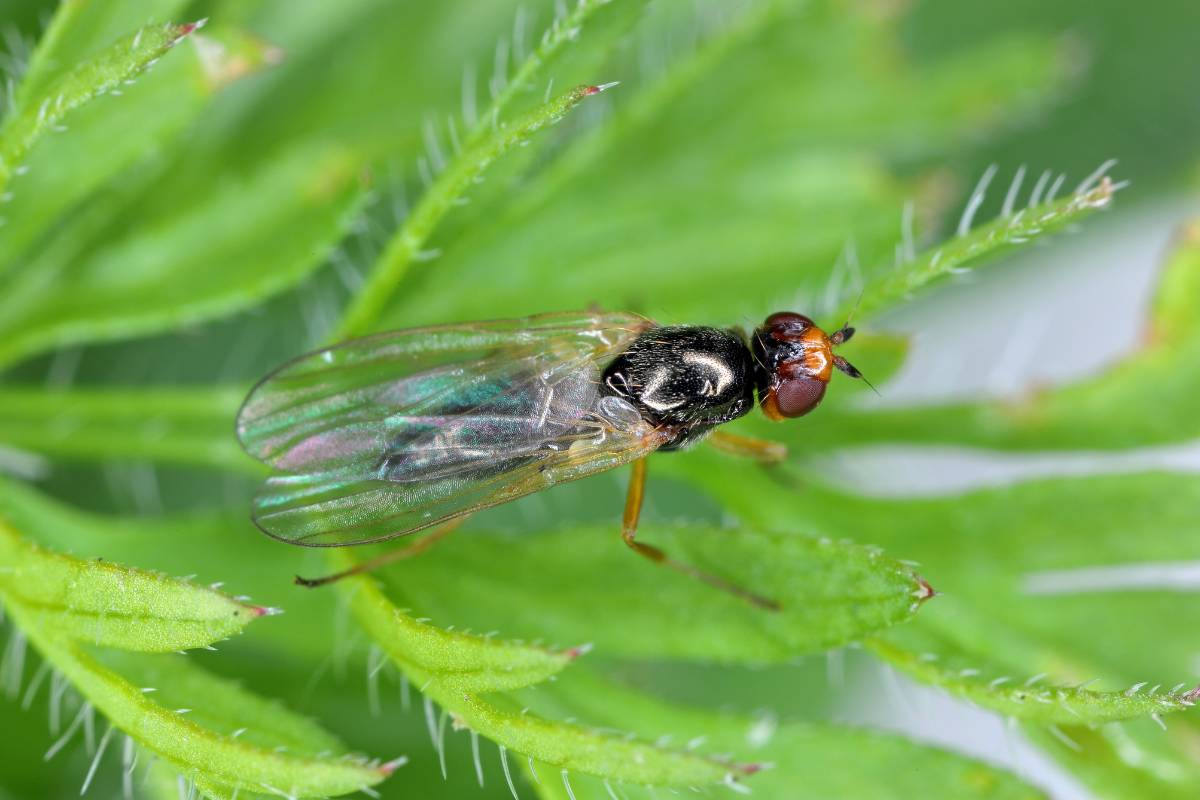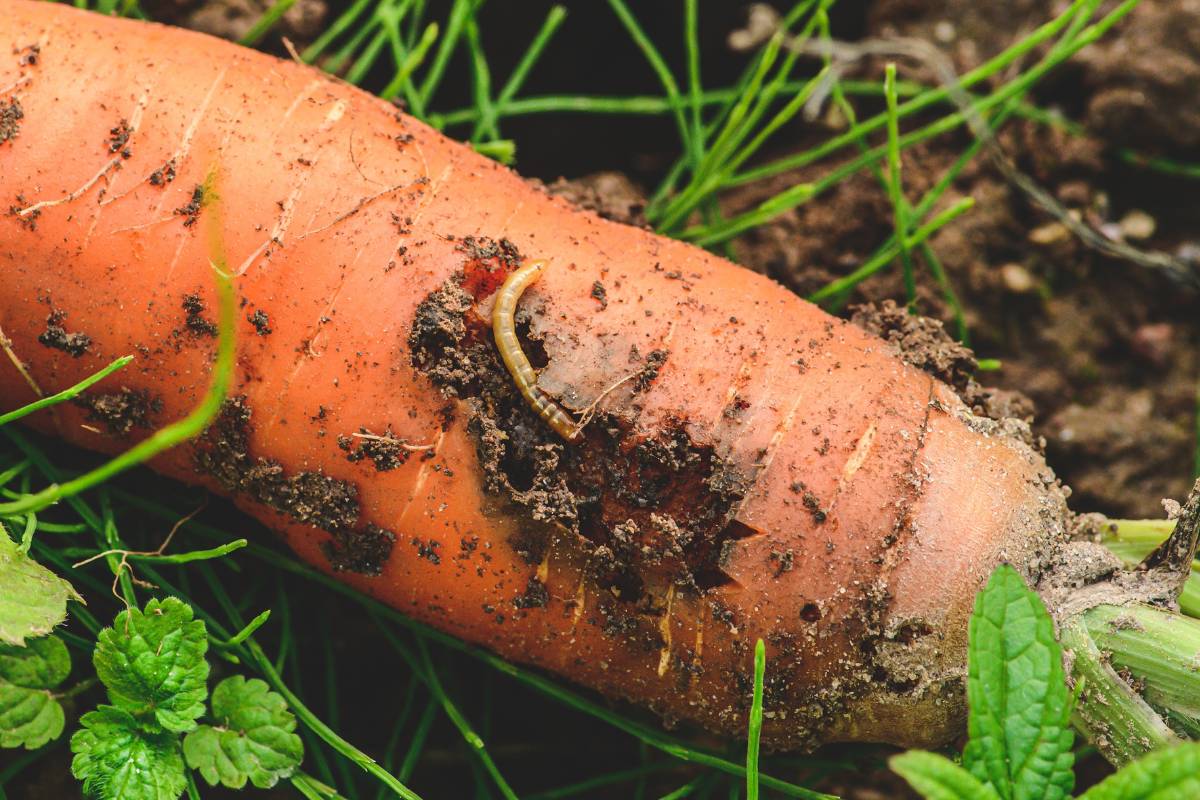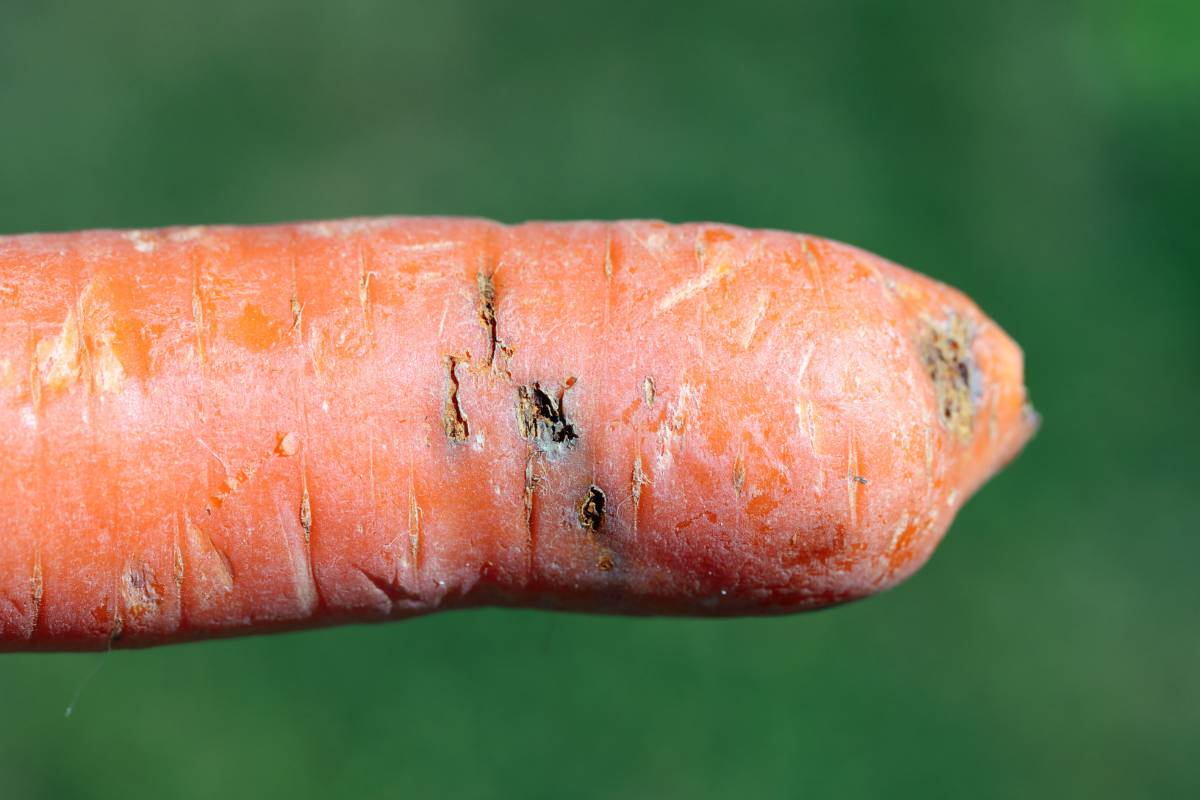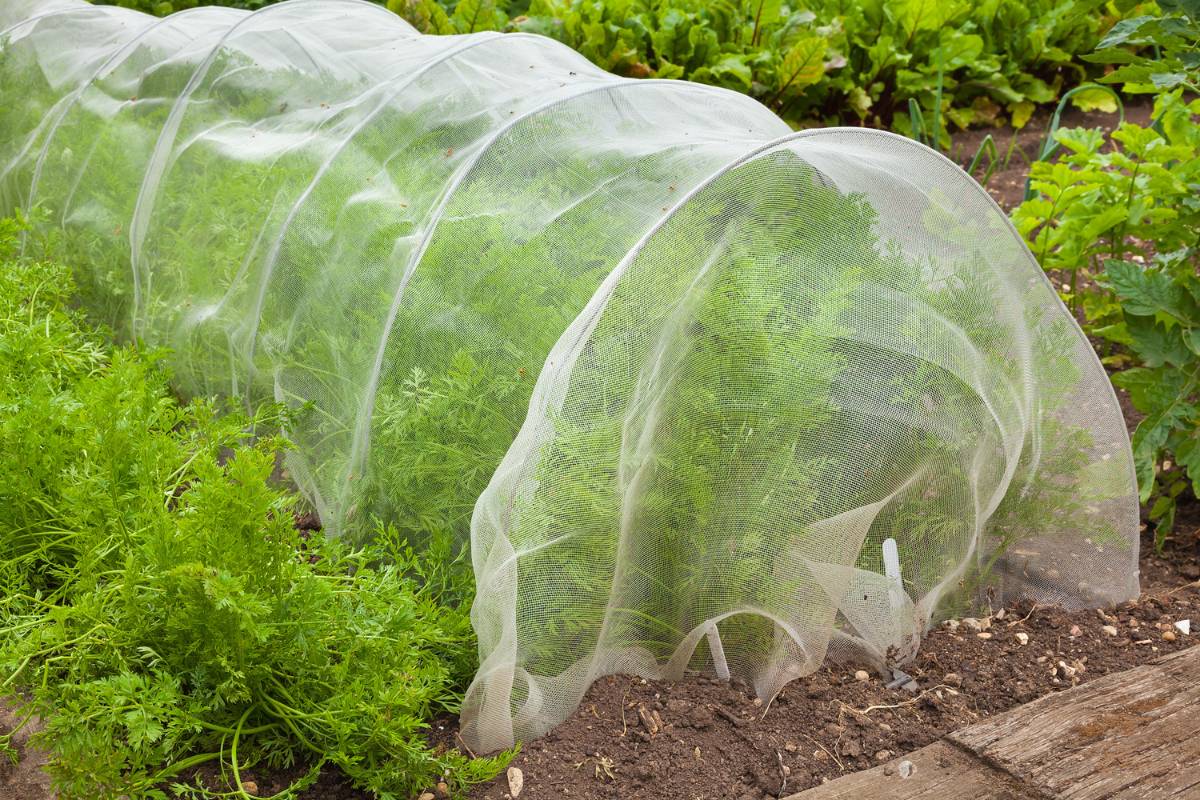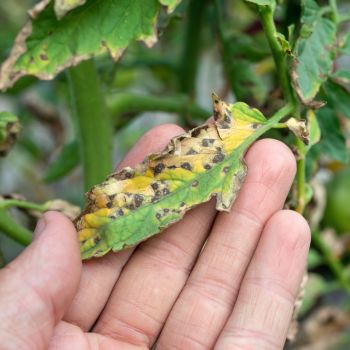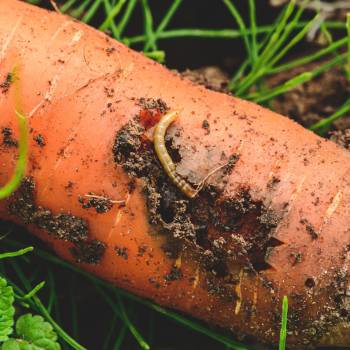Imagine the disappointment when, after months of careful cultivation, you dig up your carrot crop to discover it's riddled with discoloured scars and blackened tunnels through the roots. If this happens, the culprit is almost certainly a pest called the carrot fly. Unfortunately, a serious infestation can ruin an entire harvest.
Recognising the Carrot Fly
Known botanically as Chamaepsila rosae (formerly Psila rosea) and also more commonly as the carrot rust fly or carrot root fly, the adult is a small black fly measuring 8mm in length, with transparent wings. As with so many pests, it's not the adult that causes the problems but the larvae that form a major part of the species' life cycle.
Adult female carrot flies lay eggs in the soil around target plants, which are commonly carrots but can also be other umbellifer family members, including parsley, parsnip, celeriac and fennel. The first batch of eggs hatch in spring, producing larvae that resemble slender, smooth, creamy maggots up to 9mm long with a pair of black feeding hooks at one end. The larvae burrow into the soil to feed, starting with their target's fine hairy roots but soon progressing to the larger, harvestable tap roots.
After feeding for a month or more, the larvae turn into shiny brown pupae around 5mm long before emerging as adults two to four weeks later. The entire life cycle can produce up to three generations in a year, but pests may overwinter in either larval or pupal form before resuming the cycle in spring.
What Damage Do Carrot Flies Cause?
As they feed on the roots, the larvae leave behind patches of brownish-black scarring, along with discoloured tunnels into the heart of the root. Heavily affected roots will be inedible or unappetisingly damaged, at the very least.
The feeding can kill young seedlings entirely if they're infested before developing a sturdy root system. More established plants will show less vigorous growth, and the leaves may turn yellow or bronze, which may be the only above-ground sign of infestation.
Carrot Fly Management and Control
The most common way for carrot flies to enter a garden is when soil, bulbs or tubers are imported that are already infested with larvae or pupae. Alternatively, while the adult flies aren't strong flyers, their lightness means they can be blown on the wind, spreading populations from place to place.
Whichever way they arrive, once the pest is present in a garden the main methods of management are focused on preventing the adults from laying eggs or depriving the larvae of suitable food. The only guaranteed way of preventing egg laying is to fit insect exclusion netting immediately after sowing, making sure the net goes at least 5cm down into the earth to create a full barrier. Keep the netting in place until harvest, moving it only briefly for essential weeding and maintenance.
Besides netting, there are several other management methods you could try, although gardeners report varying levels of success for each. They include:
- Sow seeds more sparsely than usual to reduce the need for thinning later on, as females are thought to be attracted by the chemicals released by uprooted or damaged plants. If you do need to thin, remove all debris and thinnings immediately, and make sure any roots exposed during the process are fully covered with soil afterwards.
- Grow carrots in raised beds, as the flies tend to stay close to the ground. This isn’t a failsafe method of control as wind-blown flies can still reach raised crops accidentally.
- Mulch around sown seeds to discourage egg laying.
- Practice crop rotation so that any overwintering larvae 'wake up' without a ready food source available.
- Sow in late spring or early summer to avoid the first generation of larvae that emerge from overwintering.
- Companion plant your carrots with alliums such as onions, garlic or chives, as their smell can stop females from finding suitable egg-laying spots. This is most effective when the alliums form a barrier surrounding the carrot plants.
- After a confirmed infestation, completely clear any remaining carrot plant parts at the end of the growing season, and turn the soil over now and then during winter to expose any larvae and pupae to hungry birds.
A carrot fly infestation can devastate an entire, carefully grown crop of carrots. The good news for gardeners is that by preventing egg laying or depriving the larvae of suitable food sources, the problem can be greatly reduced or even avoided in future growing seasons.
